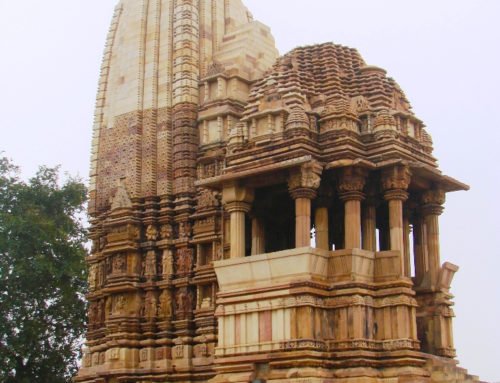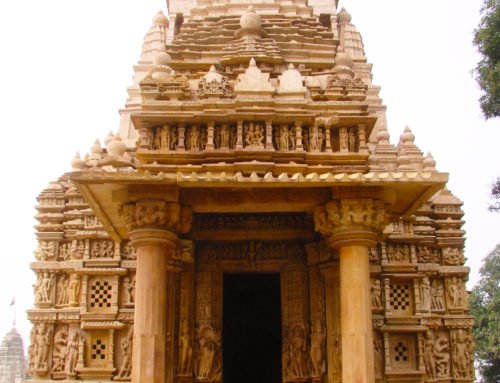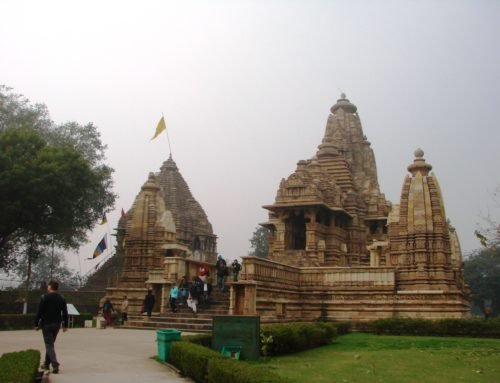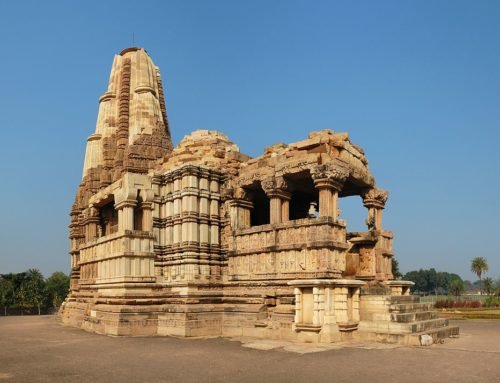Overview
- Features: Most developed, largest and tallest of all Khajuraho temples
- Opening Times: Dawn to dusk, daily
- Best Time to Visit: Late October to early March
- Duration: 30 mins to 1 hr
- Travelled By: Foot
- Cost: Western Group ticket – Indian/foreigner Rs 10/250
- Address: Rajnagar Road, Sevagram, Khajuraho, Madhya Pradesh, India
- Type: Temple
Author Reviews[display_rating_item_results rating_form_id=”2″ rating_entry_ids=”1″ show_category_filter=”false” show_options=”true” result_type=”star_rating” preserve_max_rating=”true” show_title=”false” show_count=”false” ]
Total Rating: [display_rating_result rating_form_id=”2″ show_count=”false” show_rich_snippets=true] [accordions load=”1″] [accordion title=”User Reviews” last] [display_rating_item_results rating_form_id=”5″ show_options=”true” result_type=”star_rating” preserve_max_rating=”true” show_title=”false” show_count=”true” show_rich_snippets=true] [/accordion] [accordion title=”Add Review”][display_rating_form show_email_input=”true” show_comment_textarea=”true” show_name_input=”true” rating_form_id=”5″] [/accordion] [/accordions]
Summary
At the north-eastern end of the Western Group complex, the 30.5-metre-long Kandariya Mahadeva Temple, built between 1025 and 1050 A.D., is the most developed, largest and tallest of the Khajuraho temples and represents the pinnacle of Chandelan temple art and architecture. It is remarkable for its grand dimensions, its complex yet perfectly harmonious composition, and its exquisite sculptural embellishment.
Kandariya Mahadeva Temple Khajuraho
At the north-eastern end of the Western Group complex, a number of magnificent temples are found in proximity to one another. The 30.5-metre-long Kandariya Mahadeva Temple, built between 1025 and 1050 A.D., is the most developed, largest and tallest of the Khajuraho temples and represents the pinnacle of Chandelan temple art and architecture. It is remarkable for its grand dimensions, its complex yet perfectly harmonious composition, and its exquisite sculptural embellishment. This elegantly proportioned temple is considered the finest temple in Khajuraho, with 872 acrobatic statues – most nearly 1m high – adorning the interior and exterior. It has the most representations of female beauty and sexual aerobics, all crammed into three central bands. It also has the highest and most ornamental basement with intricately carved processional friezes.
[singlepic id=252 w=720 h=560 float=center]
[singlepic id=259 w=720 h=560 float=center]
Over 800 sculptures cover the temple, depicting gods and goddesses, beasts and warriors, sensuous maidens, dancers, musicians and, of course, the erotic scenes for which the Khajuraho temples are famous. Within niches around the temple are images of Ganesh and the seven mother goddesses or Sapta Matrikas. Again, among the sculptures of Shiva and the other deities is a profusion of female figures engaged in daily activities made lovely by the sheer exuberance of the sculptural technique: A woman stretches, another plays with a ball, another admires her reflection in a mirror. You won’t have to search too hard to find fascinating erotic panels; kissing, caressing couples are depicted with their bodies entwined in blissful union, while others, sometimes in groups of three or four, engage in more lascivious activities. One frequently photographed sculpture illustrates the feasibility of the handstand position.
[singlepic id=253 w=720 h=560 float=center]
[singlepic id=260 w=720 h=560 float=center]
To enter the temple building, you pass through the elaborately carved makara torana doorway; sculpted from a single piece of stone, this is a floral garland that stems from the mouths of makaras, ever-watchful mythical crocodiles, and is carried across the doorway by flying nymphs.
Within the temple, walls are covered with exquisite carvings: Don’t forget to look upward to appreciate the sculpted flower and leaf motifs of the ceilings.
The 31-m-high sikhara here is, like linga, a phallic Shiva symbol, worshipped by Hindus hoping to seek deliverance from the cycle of reincarnation. Situated deep within the garbha griha, or “womb chamber”, it’s decorated with 84 subsidiary spires, which make up a mountain-like rooftop scene reminiscent of the Himalayan abode of the gods.








Is this the main temple in Khajuraho?
Hi Mac, yes Kandariya Mahadeva Temple is the largest temple in Khajuraho and one of the main temples in the Western complex of temples.